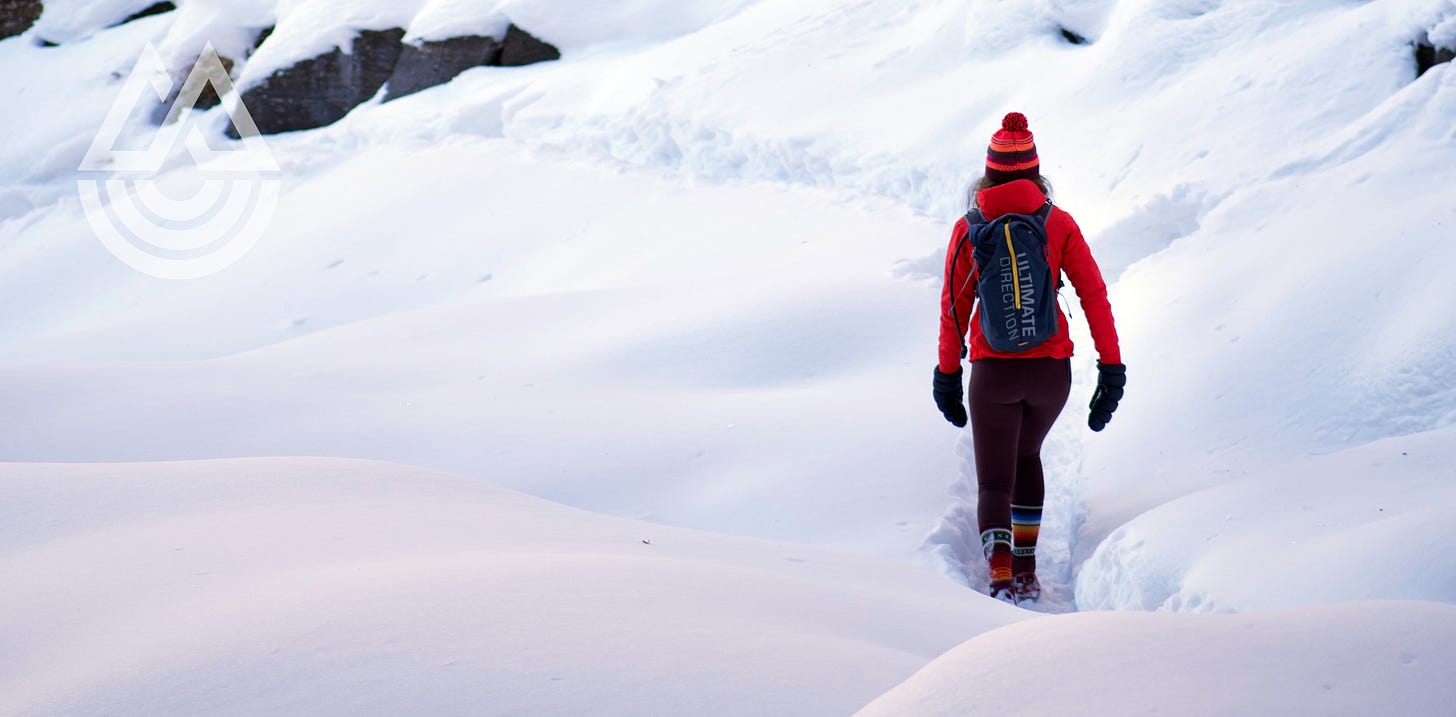Getting started with winter hiking, part 2
Special equipment to make your winter hiking safer and more comfortable
You: “Should I bring spikes for that trail?” Me: “It’d be a lot cooler if you did.”
It’s Snow Church season! Last week in Part 1, I shared all the clothes I wear head to toe in various winter temps to making hiking, cross-country skiing, and snowshoeing comfortable and safe all winter long. Today, I’m going to share my favorite winter equipment—spikes, snowshoes, and poles—to help you hit icy, snowy, powder-ful trails without slipping, sliding, or falling on your peach.
For winter pavement, packed snow, or icy conditions
Nanospikes are plastic grips that wrap around the sole of your shoe or boot, featuring small metal spikes to help you grip the terrain. Think of them like cleats, helping you transition between dry and wet or icy surfaces like pavement. These are great for walking the dog on paved trails, but don’t provide enough traction for running or hiking trails. The brand I wear are Kahtoola—you can find them on Amazon for about $40. There’s a sizing guide that corresponds to your shoe size—these are rubbery and will stretch over your heel and toe to provide a snug fit.
Expospikes are an in-between category made by some brands (like Kahtoola, $60, or Yak Trax walking cleats, $20). They’re a step above nanospikes, meant for more dirty/rocky terrain and with a bit more traction for hiking, winter running, or dogs that pull. These may provide added support for dog walks and short hikes with the kids, but if you’re heading UP in winter, I’d skip this level and go straight to microspikes.




